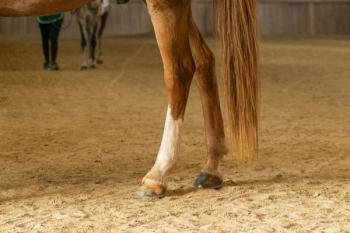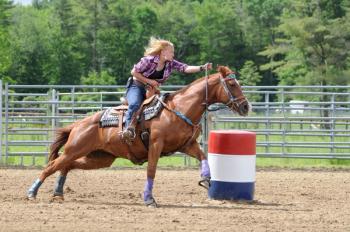
Taking the reins on equine obesity
How veterinary technicians can lead overweight horses down a healthier path using physical rehabilitation.
Fat ponies are so common that they've come to be seen as normal. We can do better for the health of these horses, says author and rehab technician specialist Mary Ellen Goldberg. Shutterstock.com.Obesity, and the risks that come with it, pose a serious threat to overweight horses. Weight management should be a cornerstone wellness program in every equine veterinary clinic, and the rehabilitation veterinary technician should be the champion of the program and advocate for the patient.
Obesity predisposes horses to serious conditions such as laminitis and equine metabolic syndrome. Environmental issues such as overfeeding and lack of exercise contribute to obesity in horses, and these problems are only increasing with modern management practices. And for insulin-resistant horses, diet alone is not an effective approach.
This means the treatment plan for each horse must be individualized, and an exercise program based on physical rehabilitation modalities is a great element to incorporate. Equine physical rehabilitation includes manual therapies, electrotherapy, functional retraining and therapeutic exercise-based treatments, along with owner education and ongoing procedures for the owner to manage.
Rehabilitation strategies such as hot walking and use of an equine treadmill are useful in managing obesity in horses. What's more, the swimming pool, hydro spa, water treadmill and, more recently,
Long reining from the ground-with the therapist walking behind the horse using two long reins to direct the horse right or left-is a great strategy for obesity management. The art of this type of exercise is to “read” the horse's muscles, then choose suitable exercises to influence different muscle groups. The deep muscles that stabilize a horse's frame are influenced through over-ground activities. Targeted exercises build power and strength in the muscle group doing the most work during the activity.
Pastures or fields are invaluable not only in exercise but also to alleviate boredom. Slopes can be incorporated for horses to walk across or up and down. Also, a horse can be made to back up, going up, down or across a slope for two or three strides. Each movement recruits different muscle interactions, as does being forced to balance on uneven ground.
Successful weight management begins by recognizing that obesity is a disease. It also begins by realizing the importance of weight control in the horses we so dearly care about. It's essential that the rehabilitation team, specifically the veterinary technician, communicate the serious effects that even a few excess pounds can have on the health and longevity of a horse's life.
Sources
Ambrosio F, Kadi F, Lexell J, et al. The effect of muscle loading on skeletal muscle regenerative potential: an update of current research findings relating to aging and neuromuscular pathology. Am J Phys Med Rehabil 2009;88(2):145-155.
Bromiley MW. “Rehabilitation.” In: Equine injury, therapy and rehabilitation. 3rd ed. Oxford, UK: Blackwell Publishing, 2000;130-159.
Clayton HM, Lavagnino M, Kaiser LJ, et al. Swing phase kinematic and kinetic response to weighting the hind pasterns. Equine Vet J 2011; 43:210-215.
Stubbs NC. “Physical therapy and rehabilitation.” In: Sprayberry KA, Robinson NE, eds. Robinson's current therapy in equine medicine. 7th ed. St. Louis: Elsevier/Saunders, 2015; 101-106.
Walker VA, Dyson SJ, Murray RC. Effect of a Pessoa training aid on temporal, linear and angular variables of the working trot. Vet J 2013;198:404-411.
Mary Ellen Goldberg has been an instructor of anesthesia and pain management at VetMedTeam since 2003. She's a staff member at the Canine Rehabilitation Institute as a certified canine rehabilitation assistant, executive secretary for the International Veterinary Academy of Pain Management, and exam chair for the Academy of Physical Rehabilitation Veterinary Technicians.
Newsletter
From exam room tips to practice management insights, get trusted veterinary news delivered straight to your inbox—subscribe to dvm360.






